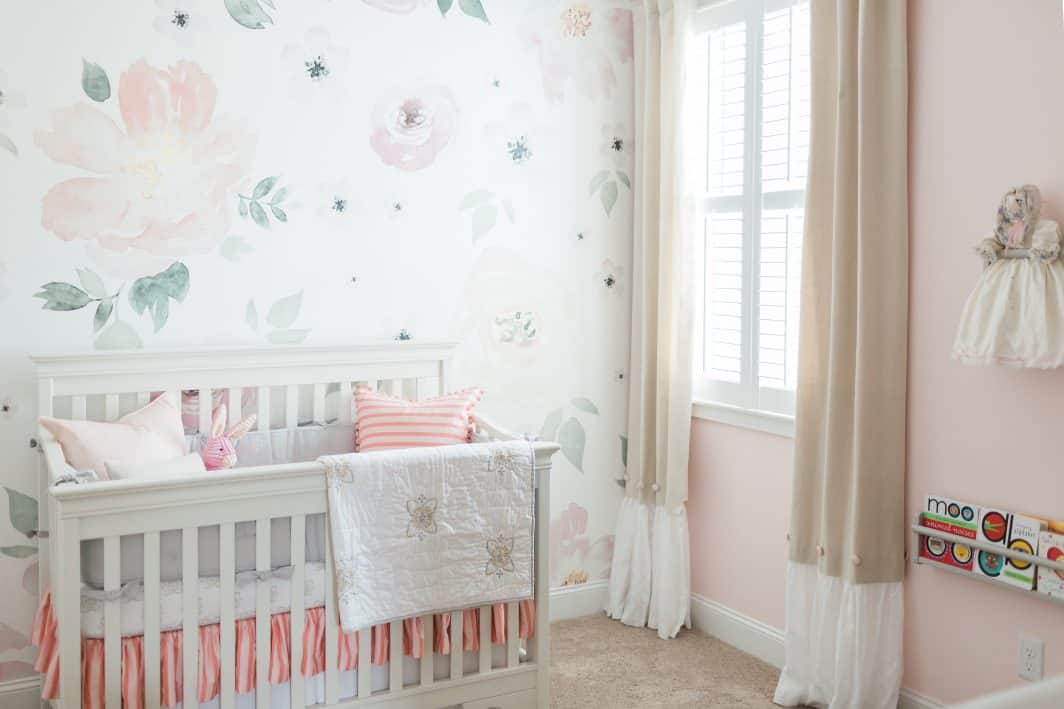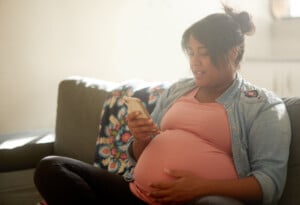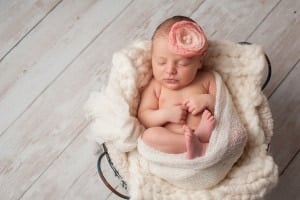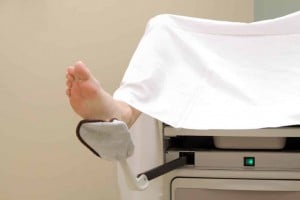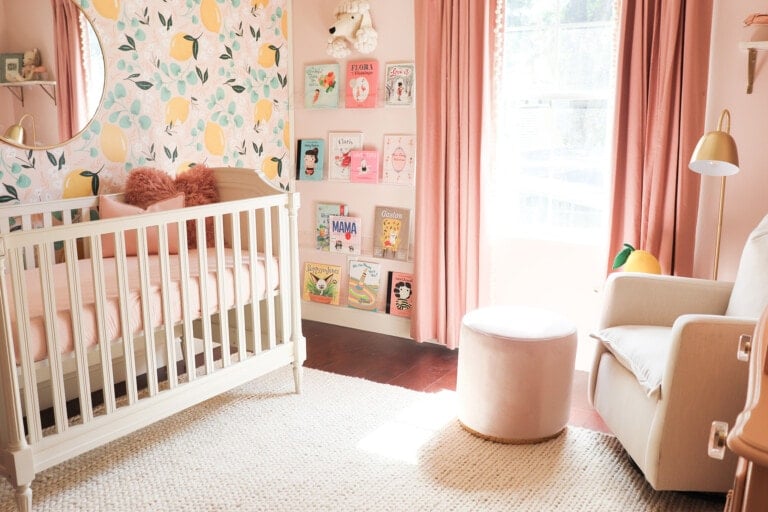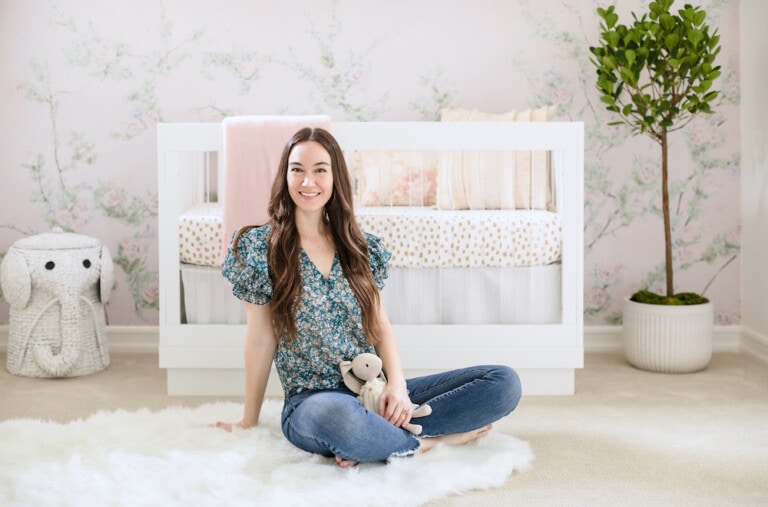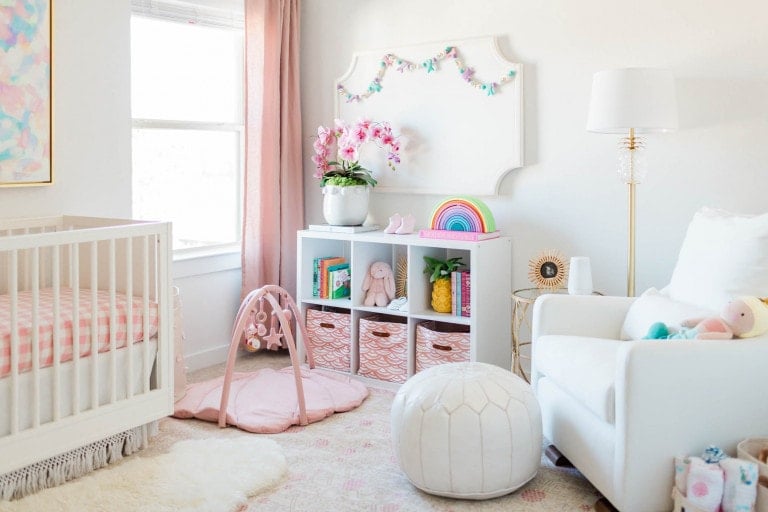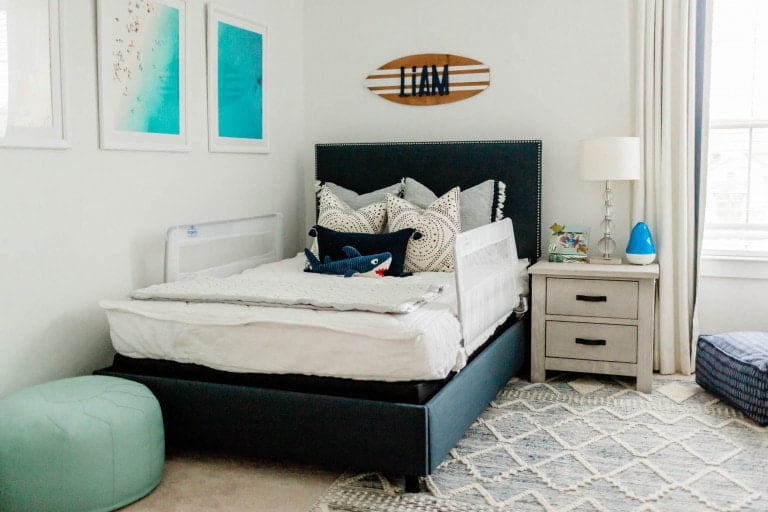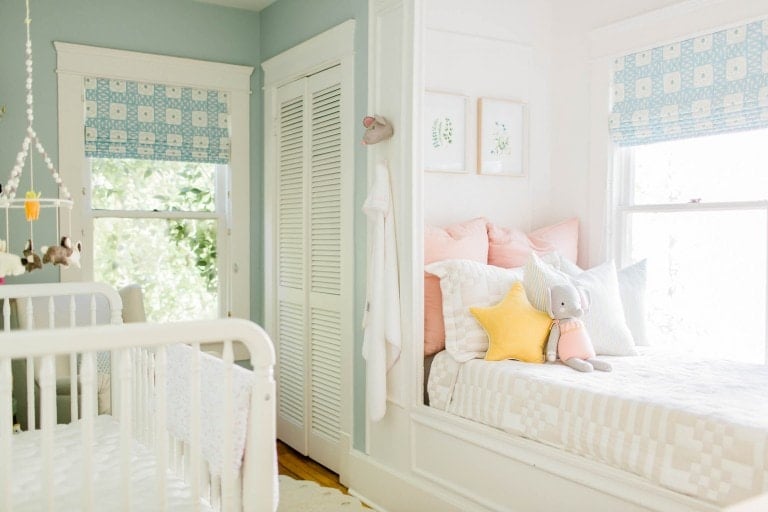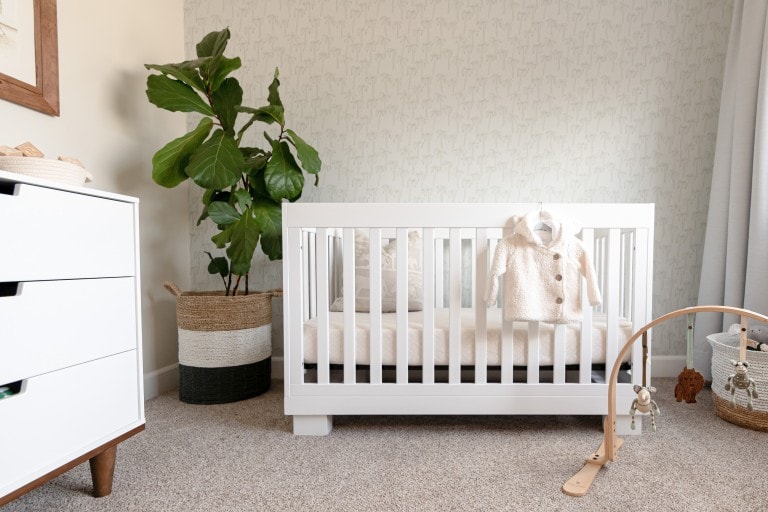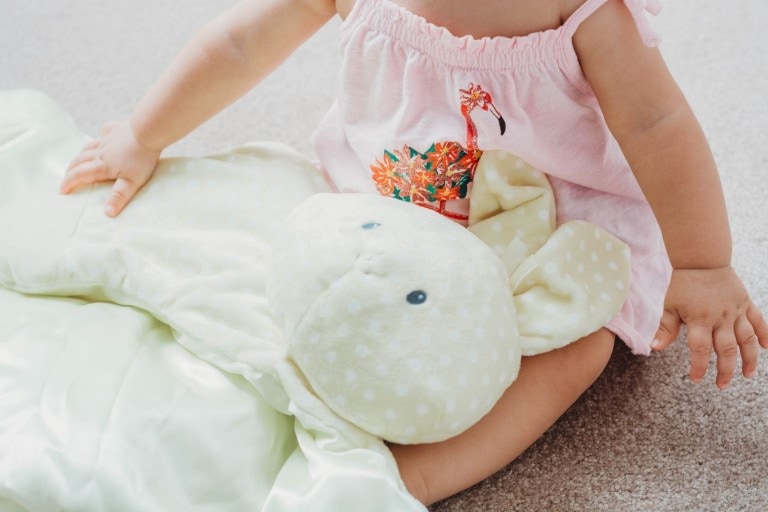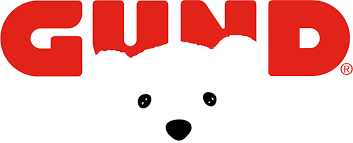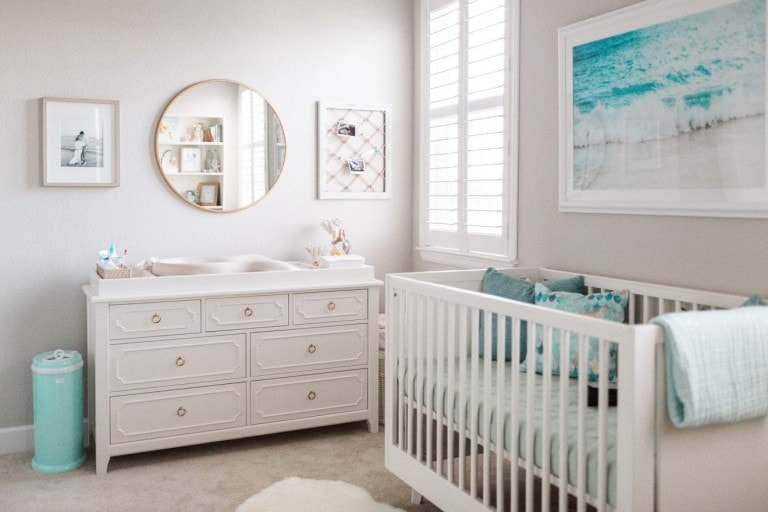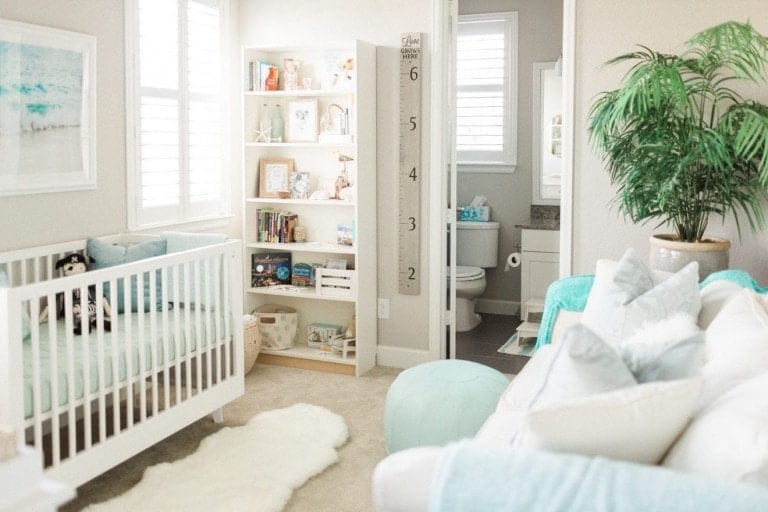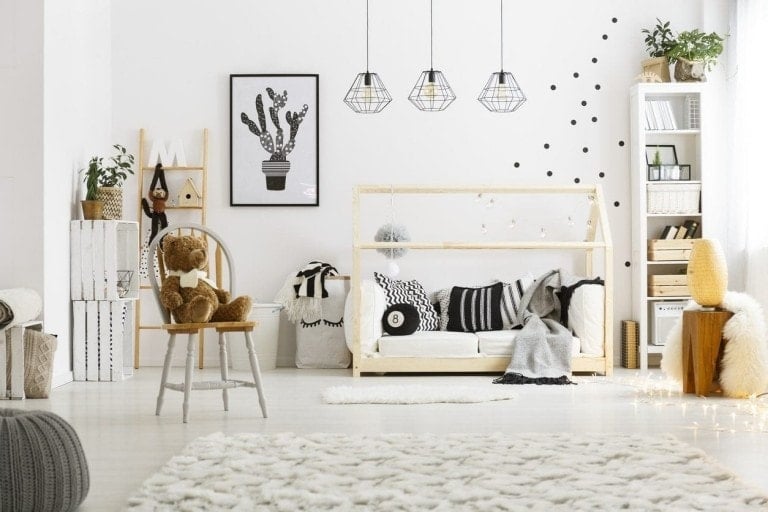Although they may be adorable and small, newborn babies come with a lot of “stuff.” Among the little clothes, diapers, and furniture, there is much to consider when decorating, arranging, and organizing a nursery. Naturally, you want to ensure the nursery looks as cute as your baby! Here are a few tips for a functional, well-organized, and beautiful nursery.
1. Arranging the Furniture for Function
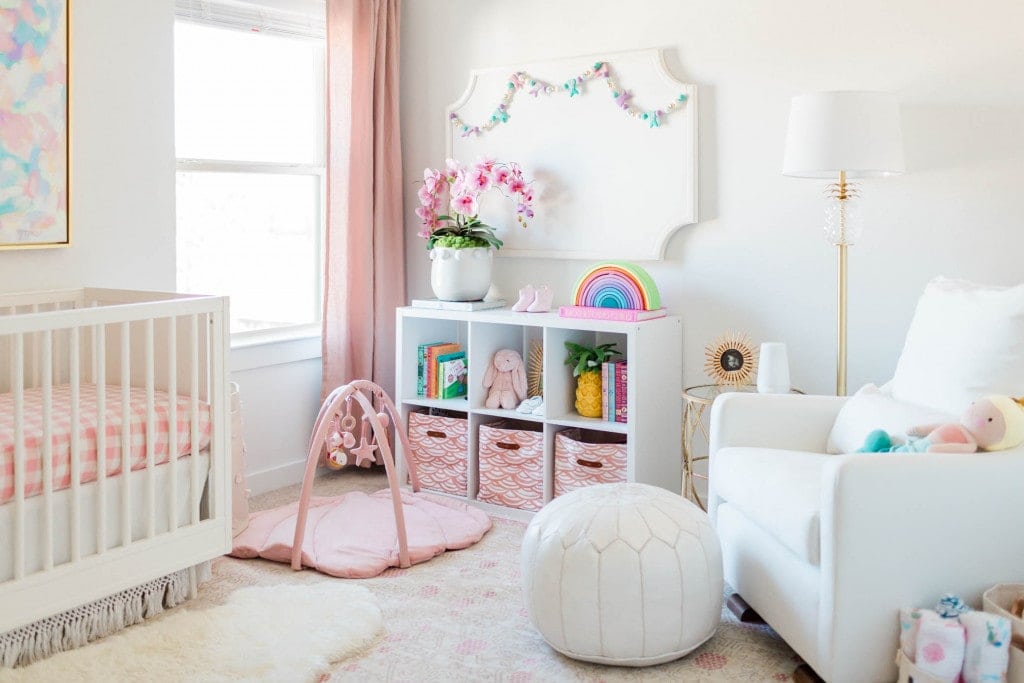
Many soon-to-be moms and dads have the walls painted and pick out bedding, mobiles, and perfect outfits before considering buying and arranging the furniture. Cribs, changing tables, dressers, and gliders take up a lot of space. You want them to look great, but placing them in practical spots in the room is even more important.
To help create flow in the room, functionality should be considered a top priority in a nursery.
The function of the room depends on the activity. In this case, think about sleeping, feeding, playing, changing diapers and clothes, and so on. Ask yourself what you will be doing the most often. If you lack space, consider placing furniture against the walls and in the corners. Check out this tiny nursery reveal for more inspiration.
Optimal spacing and safety are important when locating key furniture pieces for a comfortable and convenient nursery. The crib is one of the focal pieces (and most used pieces) of furniture. After rocking or feeding the baby, the transition to the crib should be as smooth as possible. Keep a small nightstand or side table near the rocker and place a dim lamp on it. This item can be ideal for bedtime books and empty bottles after feedings. A small drawer in the nightstand can hold easy-to-reach cold tablets or burp cloths when needed. You also want to keep the crib away from the door so that you don’t wake them when you peek in to check on the baby. Lastly, the crib should be located away from a drafty window and away from curtains and draperies where the baby can easily reach to avoid choking or other hazards. The glider can be placed near the window so mom can look out while feeding.
Another key piece of furniture is the changing table. When changing the baby, diapers, wipes, and a fresh, clean outfit should be easily accessible without having to walk away and leave the baby. The changing table should be close to the dresser so you can easily and quickly grab an outfit. Keep the diaper pail and hamper near the changing table as well. This way, you can discard the diaper and dirty clothes without leaving the baby’s side.
2. Organizing a Dresser and Changing Station
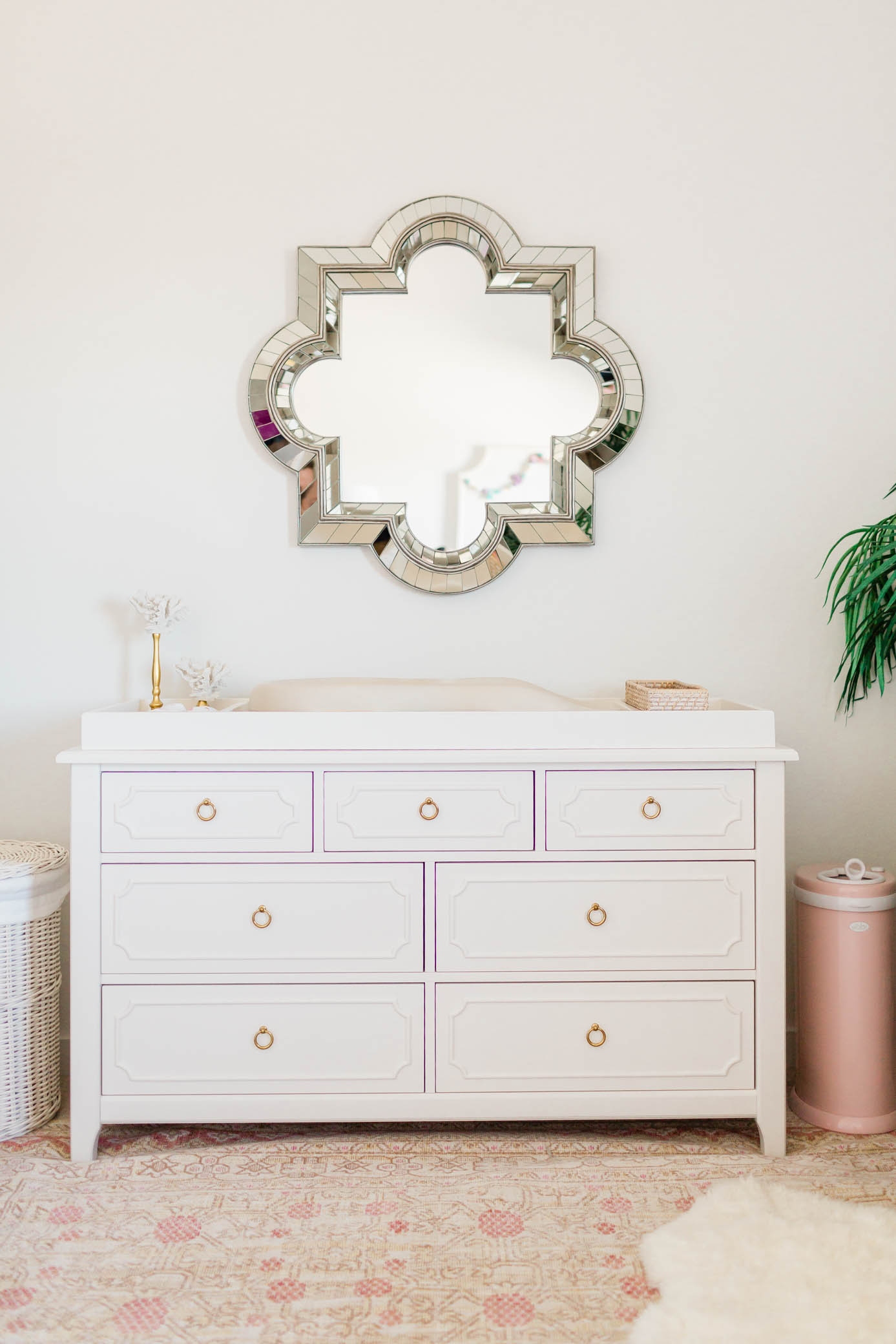
There never seems to be enough storage for all the baby’s necessities, and traditional closets with just a standard bar to hang clothes are often not cut out for efficient use. If you lack a closet system, get creative by placing a small shelf inside a closet. Place a tension rod in the middle of a bookshelf and remove lower shelves for hanging clothes. Lack closet drawers? You can use baskets or crates for accessories, extra diapers, books, and toys. You can also use a shoe organizer on the back of a closet door for hats and accessories. Chances are you have purchased clothing the baby doesn’t quite fit into yet. Organize these clothes by month with clothing dividers.
Do you still need more storage?
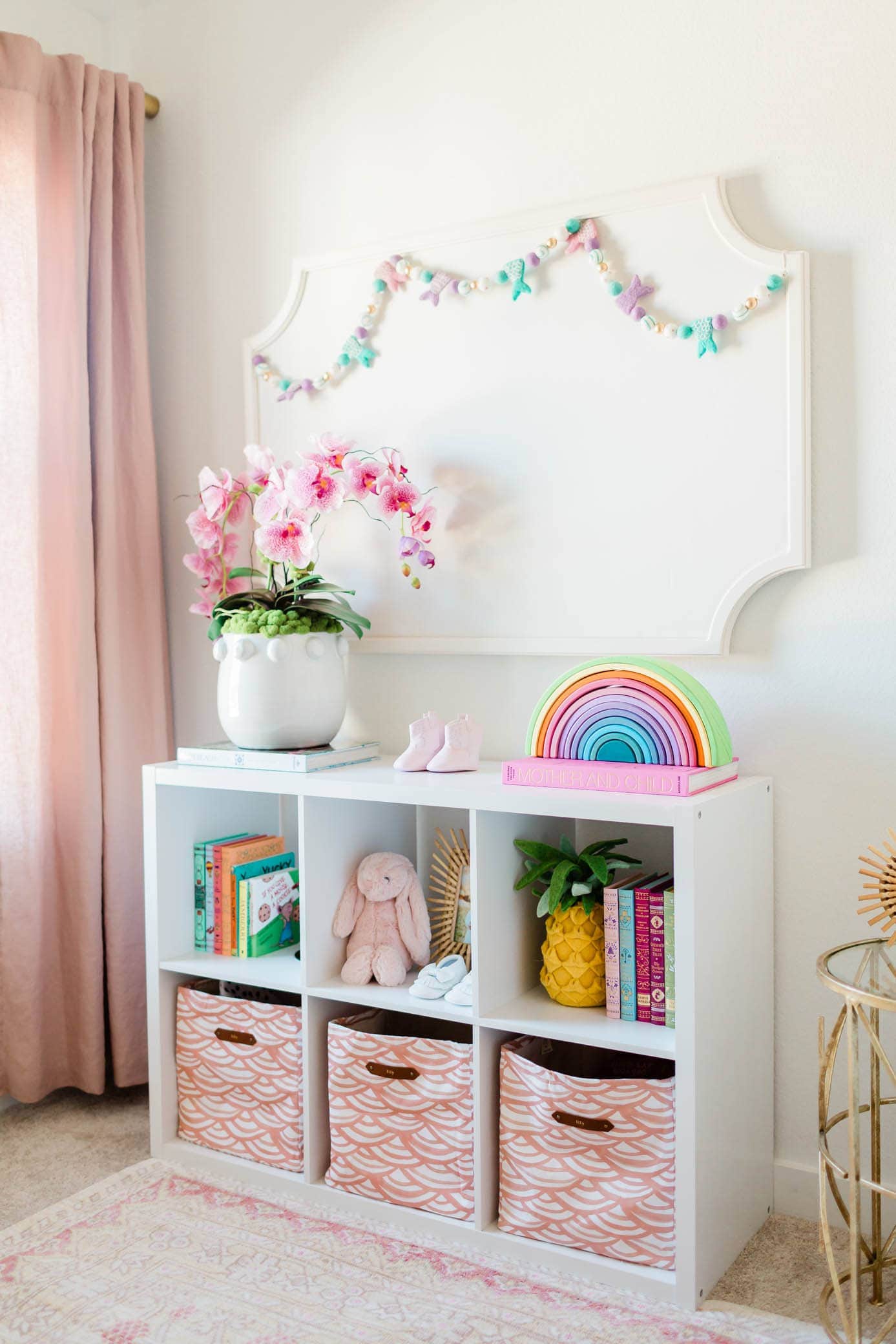
Cubed shelving with bins is a great solution. A large cubed shelving unit creates extra storage and shelving, while a small unit provides a tabletop for baby’s things. Bins can hold everything from extra diapers to toys and keep them out of sight. They are also transitional and versatile for when the baby becomes a toddler. Bins can be removed, and cubes can be used as shelves for books, piggy banks, and decorative items.
3. Double Duty Decorating
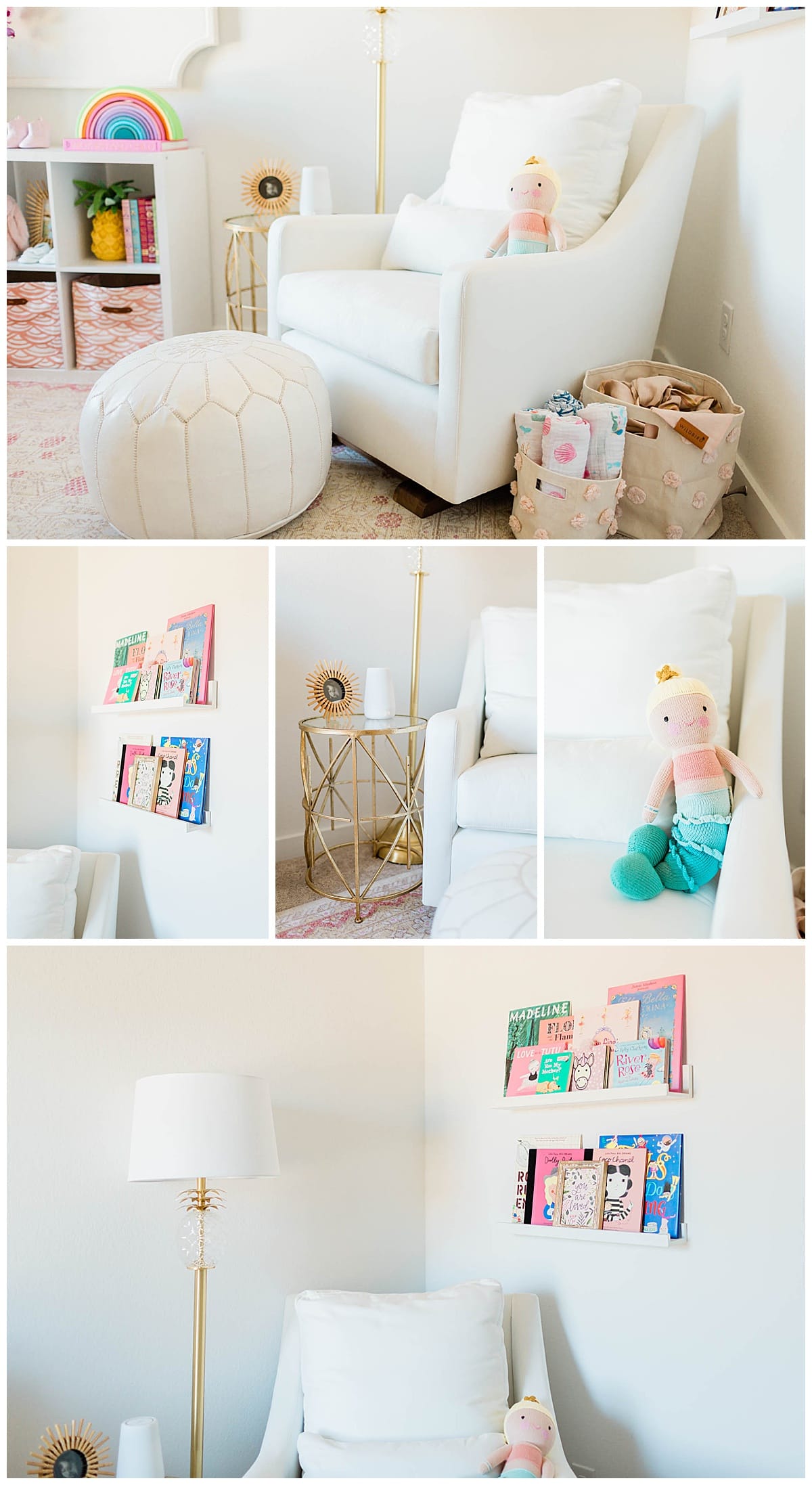
Now that the furniture is placed properly, it’s time to decorate. Framing favorite nursery books or pages with illustrations makes simple DIY artwork. Of course, baby’s name or monogram is a must and adds a personal touch as well. You can also add style with a rug and wall decals. But decorating with double duty in mind is a great way to combine fashion and function. Use picture ledges on a wall to hold and display books. A row of fabric-lined wicker or wire baskets can be hung on a wall vertically or horizontally for attractive toy storage. A vintage ladder against a wall can display baby blankets and quilts.
Don’t forget about shades and curtains.
Not only should they reflect your style and color scheme, but they should also be easy to draw for naptime and bedtime. Black-out shades, liners, or roman shades work well in a nursery. You can anchor them with decorative curtains, satisfying both beauty and function.
As you can see, there is a lot to think about when preparing a nursery for your little one. From proper furniture placement, drawer organization, and closet set-up to double-duty decorating, the best thing to remember is that if it doesn’t work, change it. After about a dozen diaper changes or so, you can make slight changes to better fit your and your baby’s needs.
This article originally appeared on PartSelect’s Blog













